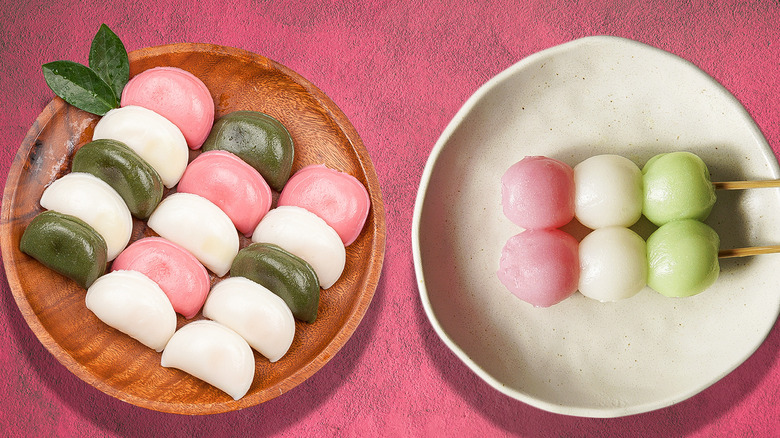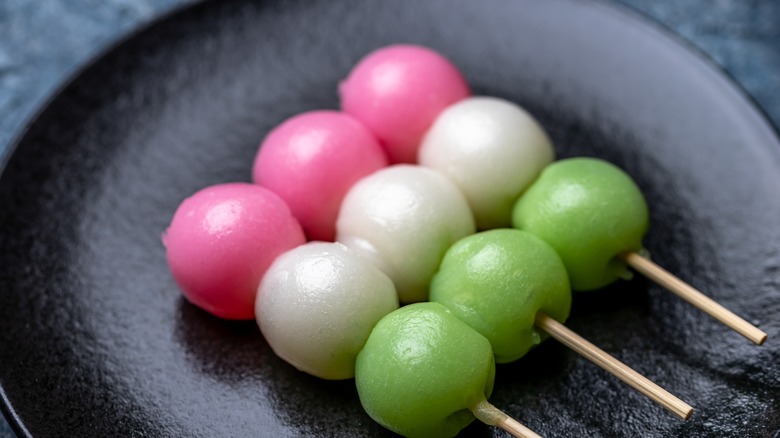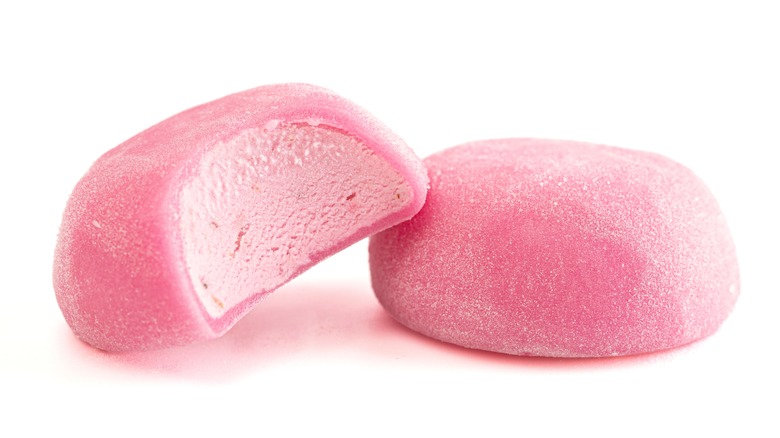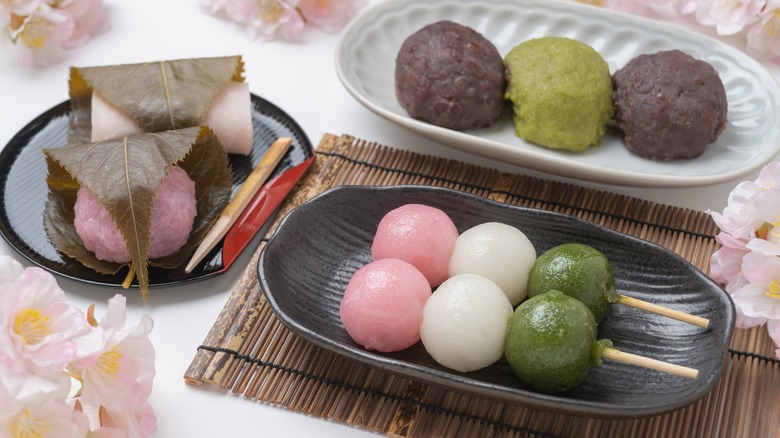The Differences Between Mochi And Dango That You Should Know
One of the best parts about trying different national cuisines is seeing a country's interpretation of the various food categories. The French have pâtisserie, and in Japan, they have a style of confectionery called wagashi. Wagashi specifically refers to a type of sweet enjoyed with green tea, and often these are bite-sized treats reminiscent of the more Western style of tea cakes. There are different types of sweets found within wagashi including mochi and dango.
At first glance these two desserts might seem identical; they're both a form of wagashi, chewy and sweet, and rice-based. But there are a few key differences that set them apart. When enjoying foods from other cultures, learning what makes their dishes special and unique is beneficial and respectful. In addition to this, these wagashi are both enjoyed as part of different cultural celebrations. Knowing the differences between these two treats lets you enjoy them more and appreciate all the unique aspects of these traditional Japanese sweets.
What is dango?
Dango is easily recognizable thanks to being served on a skewer and the famous version with pink, white, and green coloring you see everywhere from anime to emojis. But dango takes on many forms outside of this. It can be savory or sweet and is a popular street food. As mentioned, these dumplings are typically served on skewers. Each skewer will have anywhere from three to five dangos on it. Dango has a long history, possibly going as far back as 2,000 years.
Dango, as we know it today, is said to have its origin from a Kyoto tea shop in the 1900s. Today, dango has a subtle sweetness thanks to the rice flour. It's chewy without being too mushy and has an addictive bouncy texture. Dango sometimes has toppings ranging from sauces to sesame seeds, to red bean paste. Typically you won't find dango with fillings, but a few versions have one. Otoko dango, also cheekily called "man" dango, has kinpira filling (sauteed vegetable or meat). Onna dango, the "woman" counterpart, has a red bean paste filling.
What is mochi?
Mochi is a Japanese rice cake that is steamed and often filled with red bean paste or ice cream, but it can also be unstuffed. Some mochi even have a fruit filling. Mochi has a long-standing history in Japan, it's believed to go back to the Hein period where it was used to celebrate weddings, births, and the Japanese New Year. In spring mochi is wrapped in a cherry blossom leaf and called sakura-mochi.
Mochi has evolved to be a treat enjoyed outside of Japan. You can find mochi with ice cream at Trader Joe's, and Hawaii has a version of mochi called a mochi butter cake. Mochi is designed to be a bite-size treat and has a smooth, chewiness to it. While mochi has come to be associated as more of a dessert food, in its most traditional form it is enjoyed plain. Some New Year mochi is grilled after being steamed and served alongside a bowl of broth.
Dango is made from mochiko
Dango's main ingredient is mochiko, a glutinous rice flour. This rice flour is turned into a dough which is then steamed, grilled, or (sometimes) baked. You can almost think of a dango like a small cake or bun. It's more like the typical western pastries you might be familiar with. Mochiko is what gives dango this denser texture. In comparison to mochi, dango has more weight to it. It is a solid piece of dough, and often won't have fillings. Dango is made savory or sweet from the sauces or toppings. Sometimes dango has food coloring or matcha added to it for more flavoring or to give it a unique color.
Mochi is made from rice that has been cooked and pounded out till it forms a squishy paste. This paste is then shaped around fillings like ice cream or pastes. Mochi does not get additional cooking like dango, the steamed rice is already cooked. This makes mochi considerably lighter in texture. You have more elasticity and a smoother texture in mochi.



